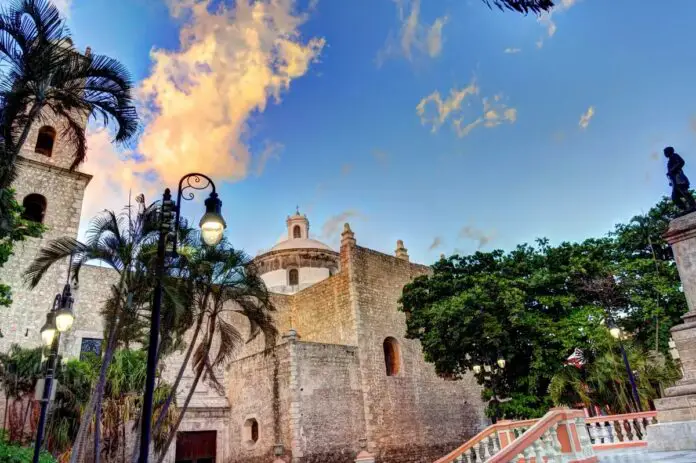Mérida, known for its colonial architecture, gastronomy, and sense of security (1.8 crimes per 1,000 inhabitants), has become one of the most attractive places to live since the pandemic.
The city transitioned from a tourist destination to a place where thousands found a space to work from home, driving a renewal process that continues to this day. In 2023-2024, the population grew by 3.3%, with over 9,000 new homes, according to the real estate consultancy Tinsa.
The Arrival of Branded Residences
The demographic and economic growth of Mérida has resulted in a higher demand for housing and the emergence of new residential models, such as branded residences.
This type of development combines residential use with hotel services (managed by renowned international chains) in a value proposition for the residential and residential plus segments. Mérida has proven to be a receptive market, partly due to rising housing and rental prices, allowing companies to capitalize on both market segments.
The Yucatecan capital currently has over 300 projects for sale and an inventory of 11,845 housing units, according to Tinsa. In the last five years, 75 new residential developments have been authorized. This has increased rental costs, now averaging 11,676 pesos per month for a 65-square-meter apartment, 21% more than two years ago.
In the sales market, the average price per square meter reaches 37,341 pesos, with an accumulated increase of 4.2% so far in 2024, surpassing inflation by 2.4 percentage points.
This dynamic has attracted considerable investments, with an economic spillover of 9.3 billion pesos in 2023, according to Canadevi (National Housing Development Chamber), and projects equivalent to 18 billion pesos, according to ADI (Real Estate Developers Association).
Demand comes from 43% of residents from neighboring states and 23% from people from the Valley of Mexico. This context has been conducive to the start of branded residences in the city.
The Evolution of Branded Residences in Mérida
This model, originating in global tourist destinations like Miami, Dubai, and Los Cabos, has proven successful in cities where the demand for luxury properties with exclusive services is increasing. Globally, branded residences have grown by 160% in the last decade, according to the consultancy Savills.
The arrival of such developments in Mérida reflects the trend of attracting high-net-worth buyers seeking both the security of a real estate investment and the experience of a hotel lifestyle, primarily from the national market, looking to experience Yucatecan life in all its splendor.
Xcanatún: An Example of Coexistence with History
Among the two branded residence developments in Mérida is Xcanatún Residences Angsana Heritage Collection, a project aimed at attracting residents from across the country, uniquely located in a 300-year-old henequen hacienda.
The project’s promise is to integrate residential life into a modern development with hotel amenities, in the ancient construction operated by Banyan Group.
The development includes 90 units in five towers, with apartments ranging from 116 to 348 square meters, and prices from 9.6 to 21 million pesos. The proposal also includes a scheme allowing owners to live in their units or integrate them into a rental program managed by the hotel brand.
Of the 90 units, only 45 will initially be available for this scheme, with an estimated gross annual return of 6.03%, suggesting an investment recovery period of 16.6 years, according to Inmuebles24.
Construction began in March 2024 and is expected to be completed by 2026. It will include an event hall for 300 people (to capitalize on wedding tourism). This type of infrastructure responds to a growing demand in Mérida, where the current supply of event spaces is limited by climatic factors, according to Alfonso Peniche, the project’s commercial leader.
With a sales progress of 40% (36 units), the profile of buyers reveals that 80% come from Mexico City and 20% from Mérida. This trend reflects the population increase Mérida has experienced between 2000 and 2020, largely driven by internal migration.
The architectural design, by Tama Arquitectura, incorporates local elements and materials such as chukún and tropical woods, respecting the historical essence of the hacienda. “The challenge is to maintain the balance between heritage preservation and current market expectations,” comments Paulina Vargas, responsible for interior design.
Market Perspectives
Mérida’s real estate market continues to show signs of sustained expansion. According to experts, this growth is favored by the characteristics of the soil, which allow for more economical and accessible construction. Manlio Alejandro Torres, president of the Yucatán Appraisers Association, considers this factor to be key for the development of new projects in the region.
The rise of branded residences in Mérida reinforces its position as an evolving market, where the needs for high-end housing converge with the city’s cultural heritage.
The challenge for projects like Xcanatún is to balance the preservation of historical heritage with current market expectations. Housing construction has grown faster than the population, especially in the residential and residential plus segments, according to data from the Mérida City Council.
Source: Expasion






